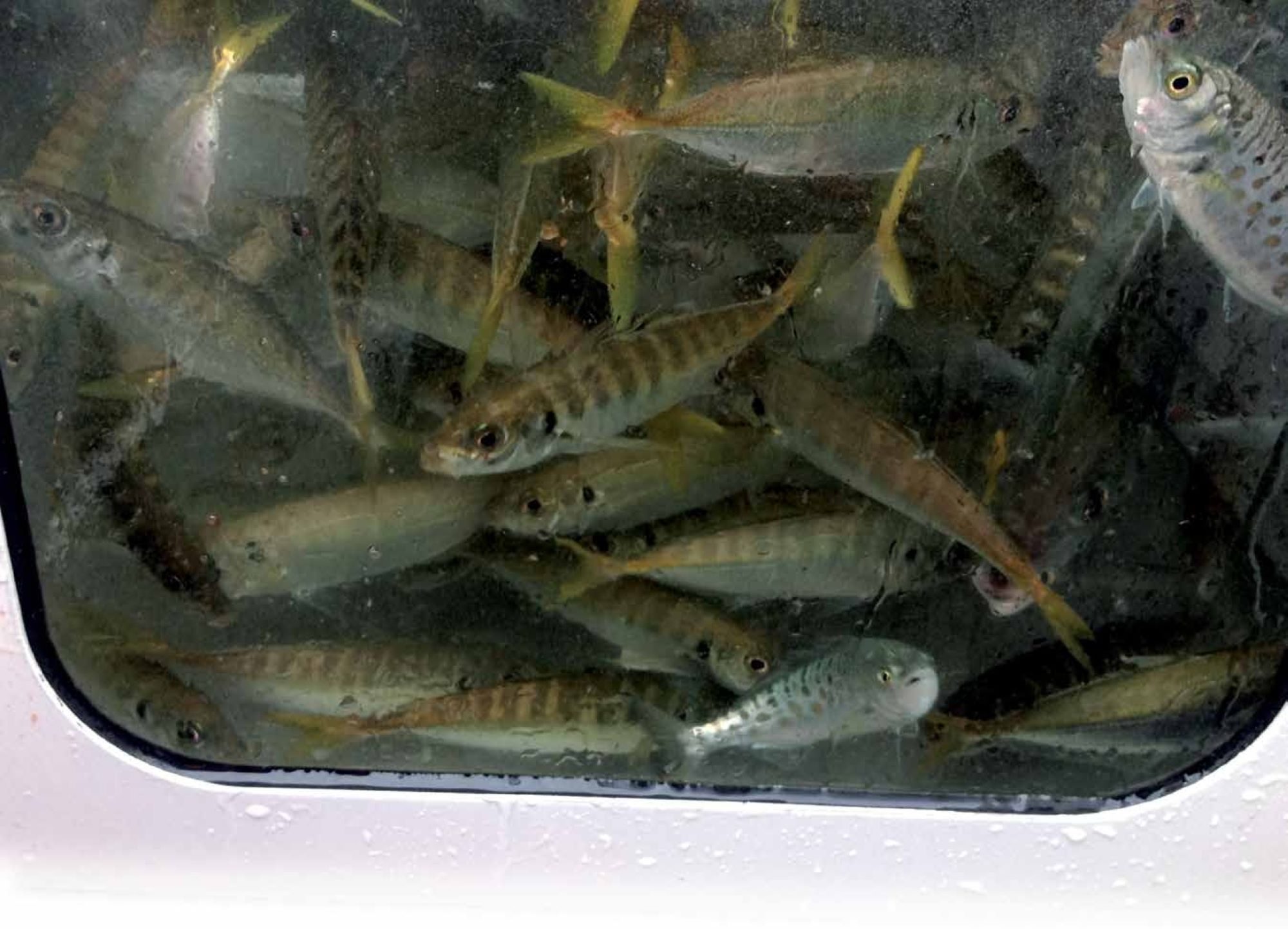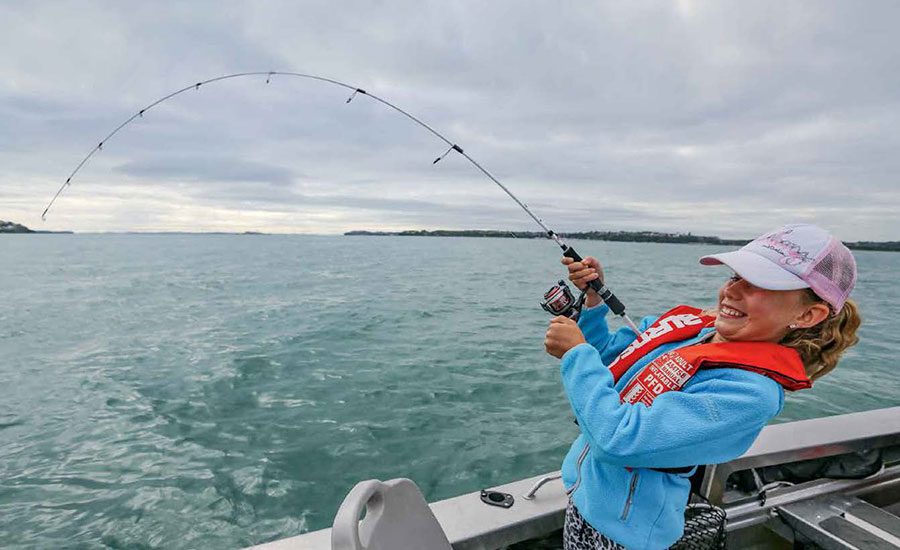

Mark takes a break from his ‘Leaders in their fields’ series to suggest fishing items and techniques that will help Christmas holiday success.
The festive period is notorious for often fickle fishing in many areas, which poses potential dangers: failure to keep the family entertained on the water and/or well fed may lead to questions about the hassles and costs of owning a boat! But pack the right gear and you should see a very different scenario…
BAIT AND BERLEY BASICS
There are obviously too many fishing scenarios to provide a ‘one-size-fits-all’ approach, but the following suggestions should cover the most common situations.
Stray-line rigs invariably work better than ledgerstyle rigs when fishing in water less than 20m deep when the current is light to moderate. For best results, stray-lined baits should be cast well away from the boat, because in relatively shallow water it’s usually only small fish that feed in the shadow of the boat, especially if the water is clear. To cast adequately, the rod should be between 2.3m and 2.44m long and fitted with a spinning reel loaded with 6-10kg nylon or braid. (Specialised free-spool [overhead] outfits can be even better, but they require more skill to use.)
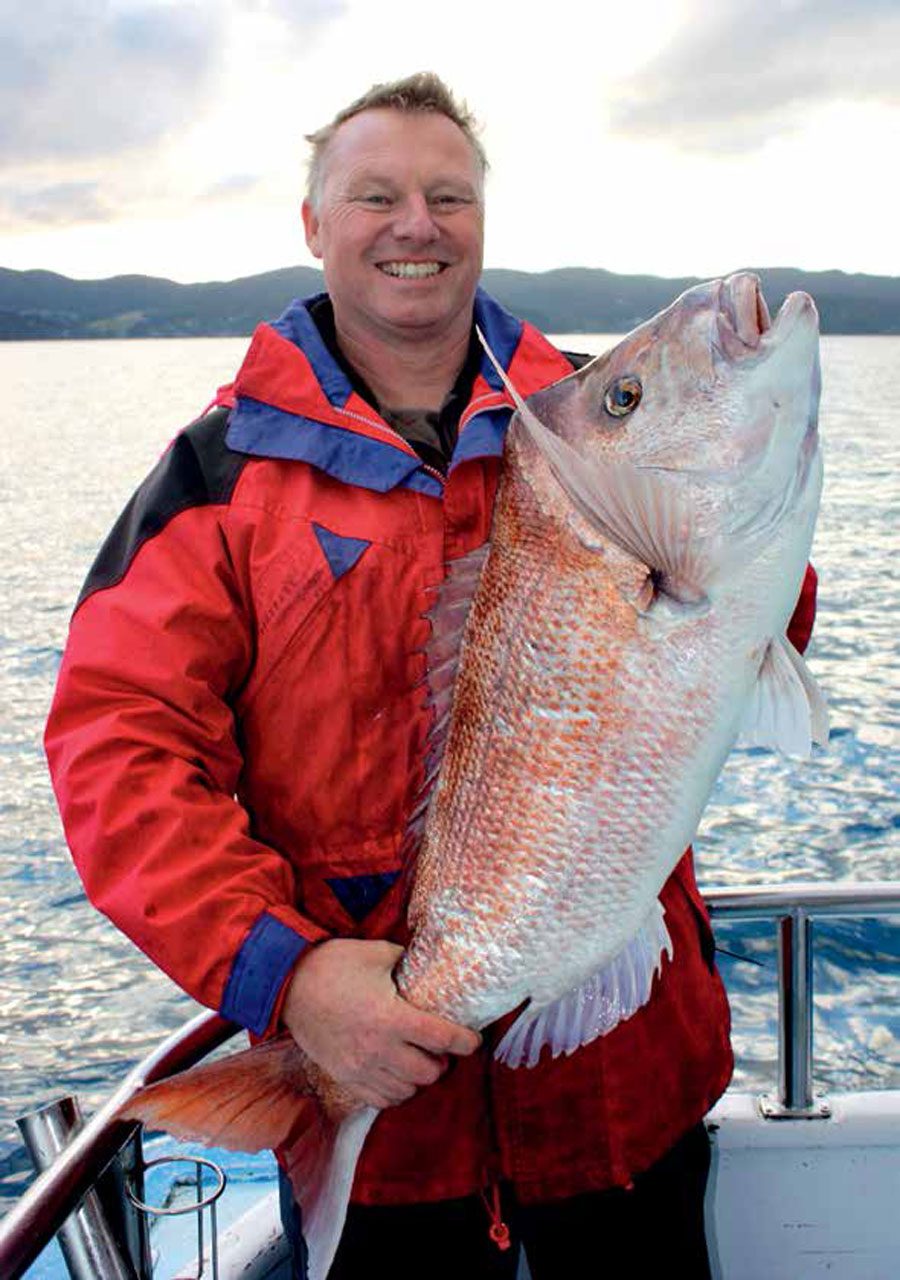
I recommend using two-hook circle/recurve rigs – correctly placed in a slim bait such as a pilchard or squid, they can be lethal. As circle hooks usually slide into the corner of the fish’s mouth, it’s possible to use them in 5/0 size, small enough to hook up well on most fish, keeping kids (of all ages!) occupied.
The lighter the sinker used the better, but the rig does need to get to the bottom and stay there for a while. So take a selection of ball sinkers ranging in weight from ¼oz to a couple of ounces and change them over as necessary. Several small sinkers placed one on top of the other are often better than one big one.
Although stray-line rigs can also be fished in water as deep as 60m, deep water is harder to fish this way. You’re often better with the two-hook ‘flasher rig’. Again, rigs armed with circle/ recurve hooks are recommended – 5/0 and 6/0 sizes tend to be effective, but make sure the baits are slim enough to be easy to eat and hooked through the end just once so the hook’s gape is not choked. Choked hooks don’t work properly.
It pays not to strike when using circle hooks – they tend to ‘bounce’ out. Instead, steadily lift the rod to commit the fish into biting harder and hanging on, so that the circle hook can do its job. This is one of the rare fishing occasions when it is better to use too much weight than too little. The rig needs to stay in position on the seafloor; it shouldn’t be swept up and away by the tidal flow. Also, the weight of a heavy sinker can often be sufficient in itself to set the circle hook, so 6-8oz weights (sinkers are still labelled in Imperial units) are suitable even in areas of modest tidal flow.

Berley will nearly always increase your chances of success. Frozen berley blocks make berleying relatively easy – they can be tied off in an onion bag to the back of the boat in shallow water or dropped deeper inside weighted berley dispensers such as the Wobble Pot. It pays to position the Wobble Pot one to two metres off the bottom.
If short on ‘bait’ fridge and freezer space, consider using salted long-life baits and dry products such as Berley Mate.
Sets of sabiki bait flies can augment or completely supply your bait needs. Catching bait often keeps younger members happily occupied. Sabiki hook sizes vary between brands, but #10 is about right for mackerel.
Strips of bait can be added to the hooks on tough days, but ensure baits are cut small enough to be swallowed. A 1oz sinker helps prevent tangles in the rig when multiple fish are hooked simultaneously.
Always carry a large net on board, ideally fitted with rubber mesh that’s kinder on fish destined for release. Hooks don’t catch in the mesh either.
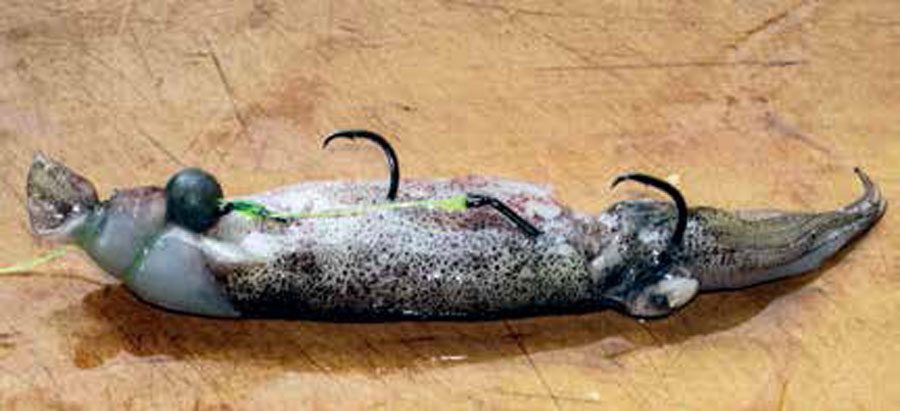
LURE-FISHING BASICS
Fishing with lures is a great way to beat the problem of storing bait and berley, and with petrol and diesel prices so high, it makes sense to keep other costs down. Being able to fish all day with just one or two lures makes fishing more affordable. It definitely pays to have a 2.3-2.44m spinning outfit on board spooled with 6-10kg braid. In addition to fishing soft-plastics, it can also be used for a variety of jigging duties, especially if the rod’s tip section is relatively forgiving (bendy).
The reel should hold around 250-350m of line knotted to two or three metres of 20-30lb fluorocarbon leader.
Soft-baiting basics: In addition to the rod, reel and trace, you will need soft-plastics and compatible jig-heads. The most successful soft-bait brands offer quite different qualities.
For example, Gulp! is dense in composition and so sinks faster. Its also flavoured and scented, but baits tend to be fragile and they require moist, airtight storage. Z-Man baits are much tougher and more limber, as well as being naturally buoyant for slower descents. However, Z-Mans may not attract as many bites on tough days and biting fish regularly reposition the bait on the hook, rendering it ineffective. Also, the Pro-Cure scent washes off over time, so they benefit from a slug of greasy fish additive (i.e. Secret Sauce or Pro-Cure).

Stretchy soft-baits such as Z-Man and Bait Junky will match best with Lightbulb jig-heads with their more prominent ribs/ collars, while the denser Gulp! products go nicely with slimribbed Berkley Nitro or BKK jig heads. In every case jig-heads fitted with 3/0 hooks tend to work well with 4-7” (10-18cm) soft-baits and are usually strong enough to handle a variety of popular fish species.
Jig-head weight is important; it usually pays to use the lightest jig-head that will get the bait down. Lighter ⅜-1/2oz jigheads are lethal in depths up to 20m or so, attracting voracious bites on the descent, but staying in contact with these lighter weights is challenging. Especially for relative novices, slightly heavier is often better, so pack some 1/2oz, 5/8oz, and maybe 1oz too, for fishing in over 30m.
The best fish producers tend to be 4-5” (10-13cm) jerk shads and grub tails, but fish change their soft-bait preference frustratingly often, so make sure you carry at least three or four different proven colours. I suggest one in natural baitfish colours, another in a bright fluorescent colour (lures with yellow, pink or orange are great in murky water), and perhaps a pack in the Motor/Engine Oil colour.
Use 7” (18cm) soft plastic baits if targeting bigger fish.
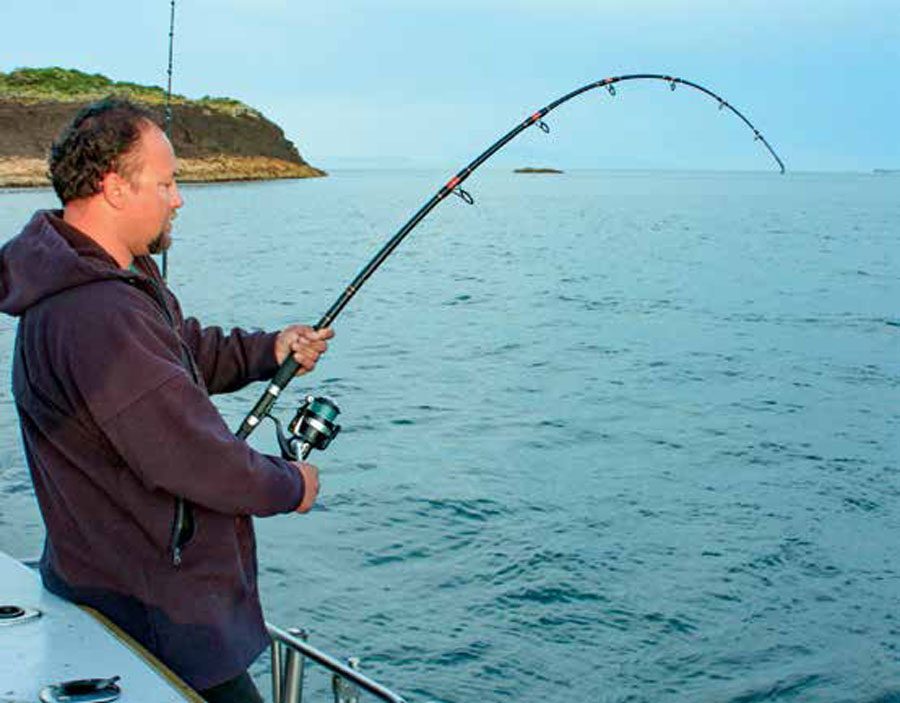
Slider/kabura-style lures have proven successful in converting many bait fishers to lures. After all, if you can drop down a weight and then wind it up again, you can fish one of these lures!
However, a lot of people get the lure weight wrong. The usual mantra of ‘lightest weight possible to get down’ doesn’t apply.
With sliders, the key is to get down where most of the fish are and stay down, rather than the lure swinging up with the current because it’s too light. 100g should be the starting point in 35m-plus, but I personally use 140g lures to start with and rarely have to change.
It always pays to be drifting when fishing with these lures.
The technique? Drop the slider to the bottom, then slowly wind up five to 10 turns of the handle, before dropping down again. The best kabura colour seems to be orange, followed by pink and white/silver. Again, fish preference varies by the day, so take at least two or three options, just in case.
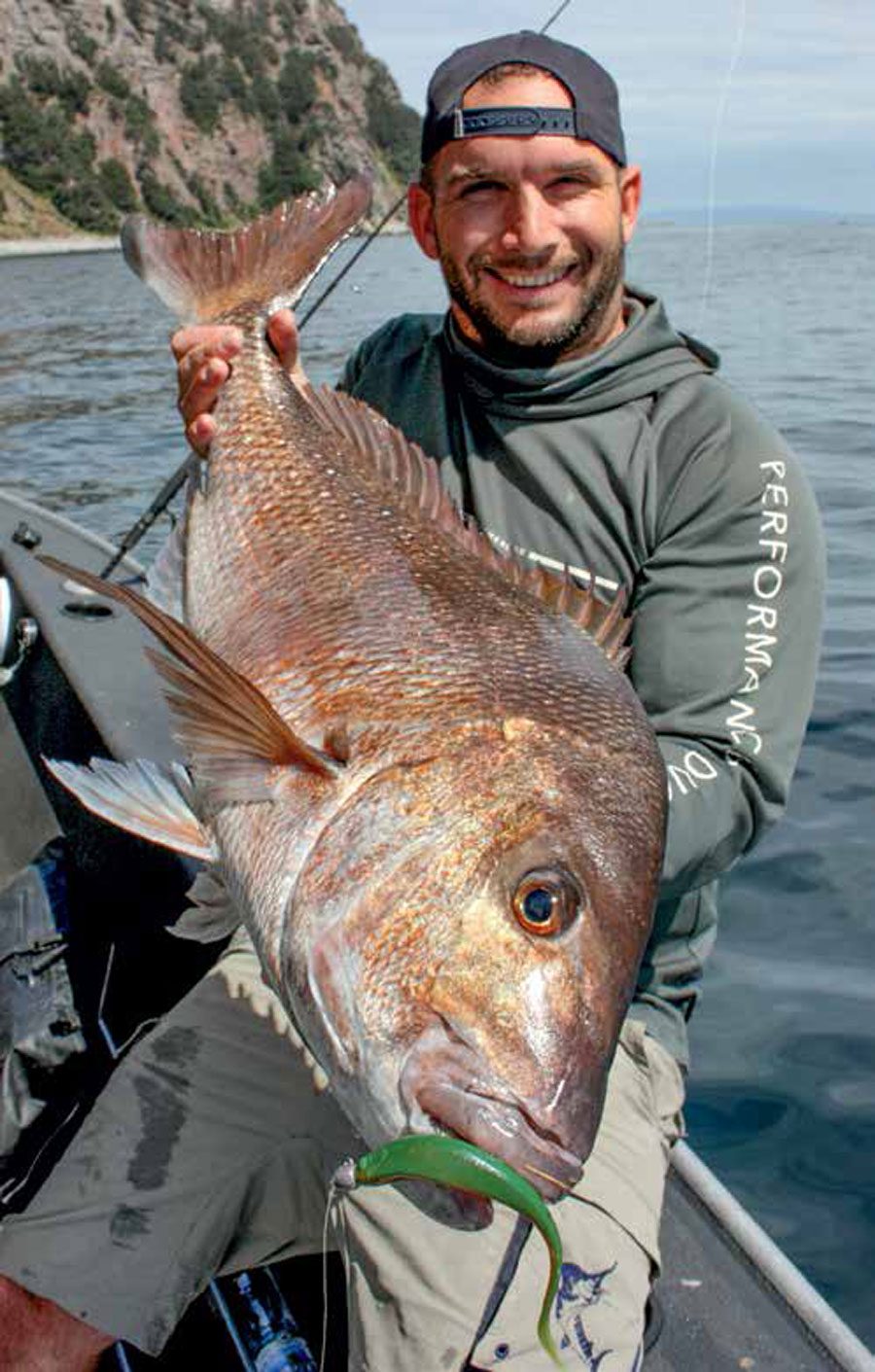
If the fishing is slow or you’re trying to keep youngsters in action, a small sliver of squid trailing from one assist hook will attract lots more bites, although often from smaller fish.
Small 14-28g jigs (‘micro-jigs’) can be exceptionally productive, producing bites galore from a variety of species – some of them big! Micro-jigging is another great way to reengage someone who’s showing flagging concentration! Simply attach one of these small jigs to a 12-20lb (5.4–9.1kg) fluoro leader on a light spinning outfit and drop it down. Keep the upward jigging movements or lifts small and erratic, as you’re trying to imitate the movements of injured baitfish. When the line angles too far behind the boat and jigging becomes too horizontal, wind in and start again.
Good colours are silver, pink, orange and metallic blue.
Finally, a drogue/sea anchor will slow your boat’s drift on breezy days, allowing much more productive lure fishing. BNZ



